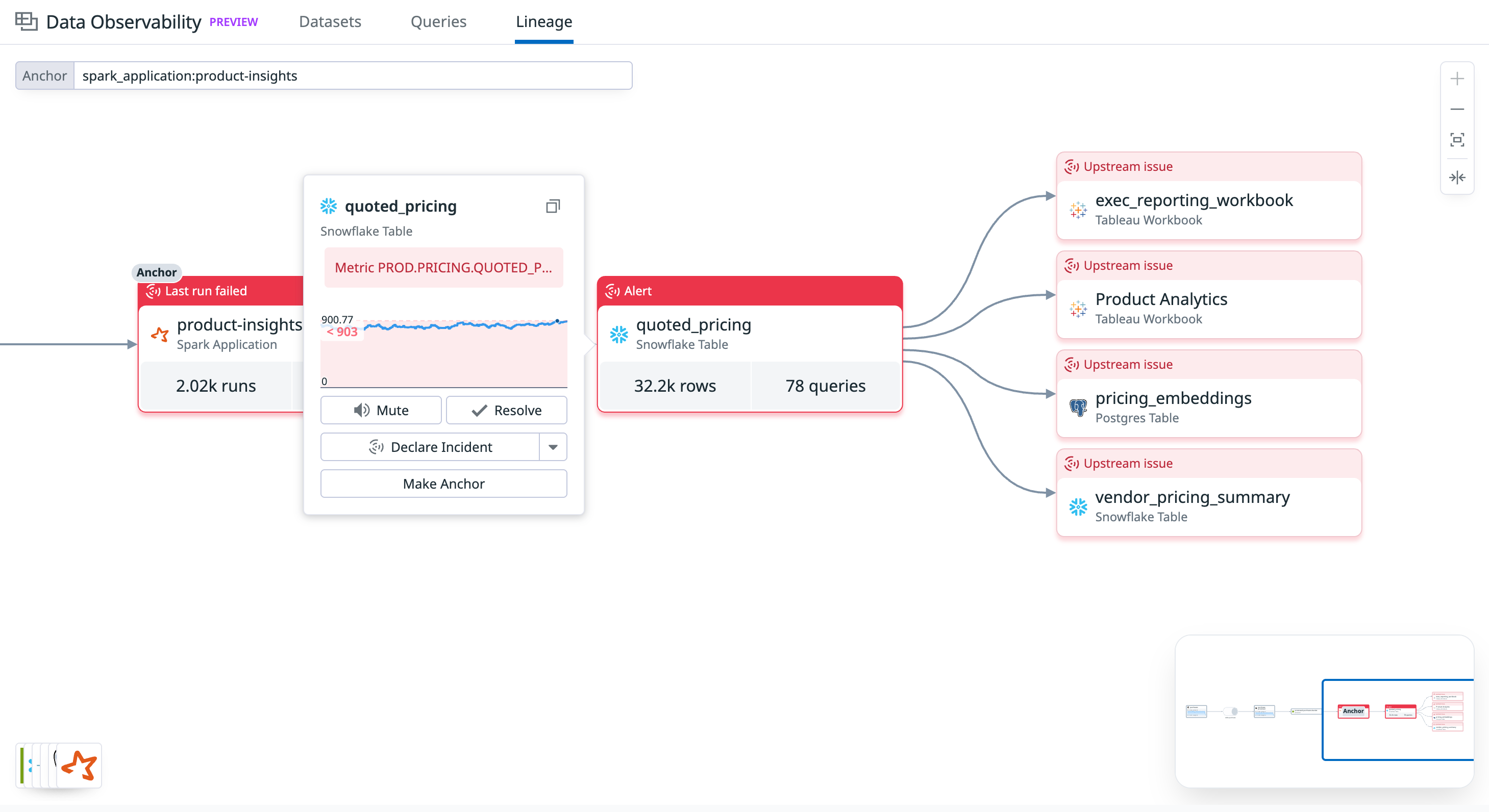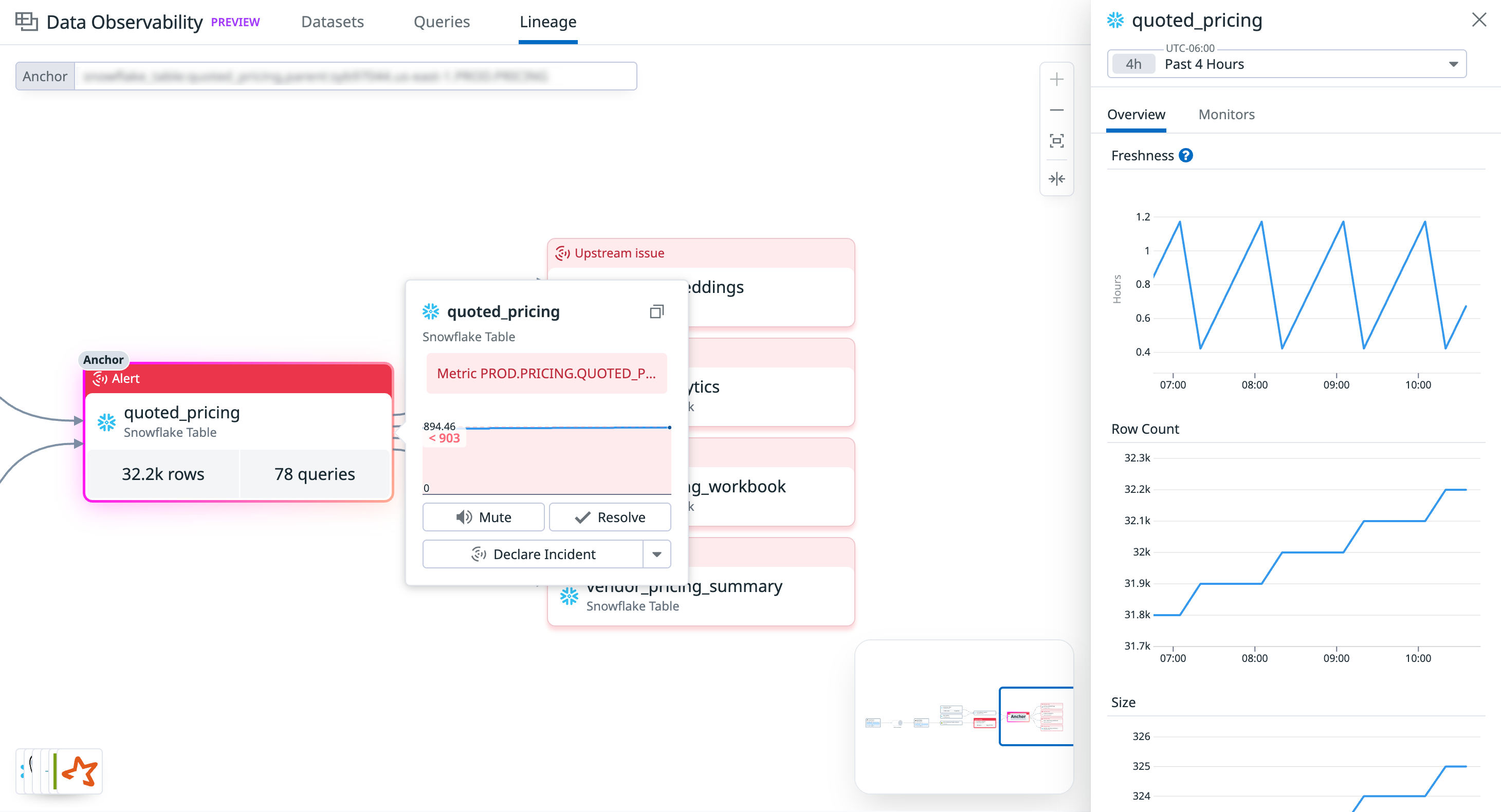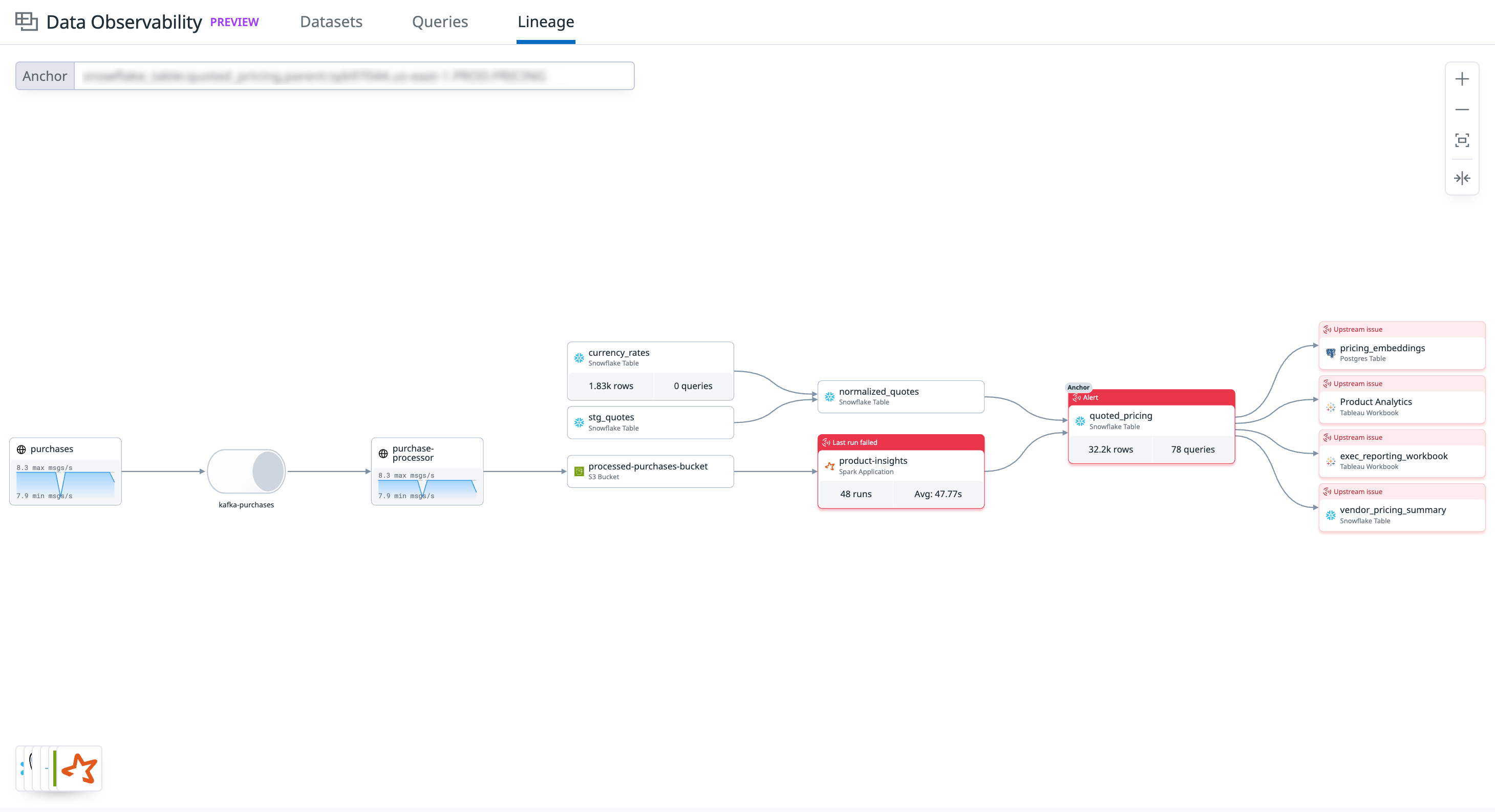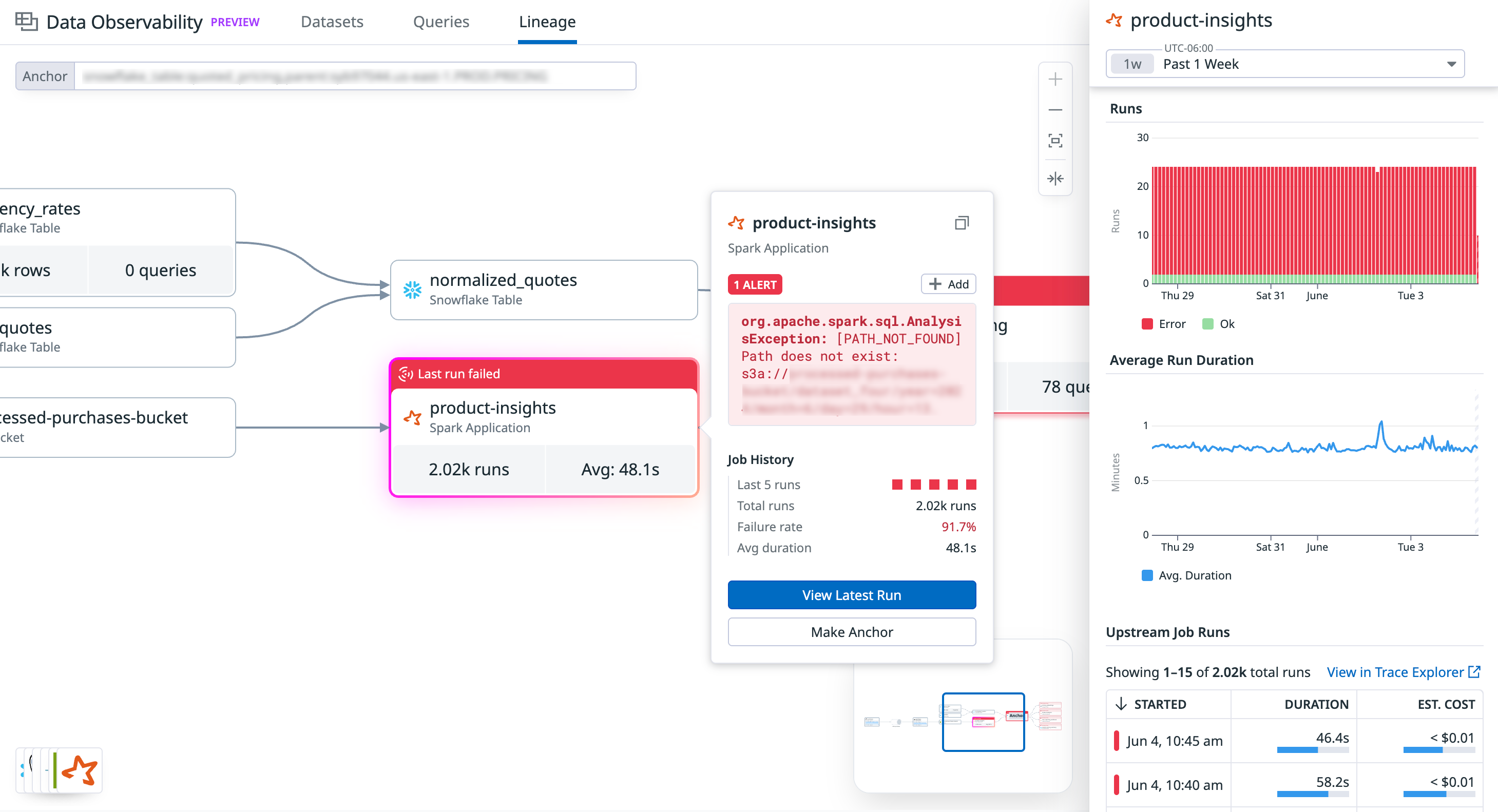- Essentials
- Getting Started
- Agent
- API
- APM Tracing
- Containers
- Dashboards
- Database Monitoring
- Datadog
- Datadog Site
- DevSecOps
- Incident Management
- Integrations
- Internal Developer Portal
- Logs
- Monitors
- Notebooks
- OpenTelemetry
- Profiler
- Search
- Session Replay
- Security
- Serverless for AWS Lambda
- Software Delivery
- Synthetic Monitoring and Testing
- Tags
- Workflow Automation
- Learning Center
- Support
- Glossary
- Standard Attributes
- Guides
- Agent
- Integrations
- Developers
- Authorization
- DogStatsD
- Custom Checks
- Integrations
- Build an Integration with Datadog
- Create an Agent-based Integration
- Create an API-based Integration
- Create a Log Pipeline
- Integration Assets Reference
- Build a Marketplace Offering
- Create an Integration Dashboard
- Create a Monitor Template
- Create a Cloud SIEM Detection Rule
- Install Agent Integration Developer Tool
- Service Checks
- IDE Plugins
- Community
- Guides
- OpenTelemetry
- Administrator's Guide
- API
- Partners
- Datadog Mobile App
- DDSQL Reference
- CoScreen
- CoTerm
- Remote Configuration
- Cloudcraft (Standalone)
- In The App
- Dashboards
- Notebooks
- DDSQL Editor
- Reference Tables
- Sheets
- Monitors and Alerting
- Watchdog
- Metrics
- Bits AI
- Internal Developer Portal
- Error Tracking
- Change Tracking
- Service Management
- Service Level Objectives
- Incident Management
- On-Call
- Status Pages
- Event Management
- Case Management
- Actions & Remediations
- Infrastructure
- Cloudcraft
- Resource Catalog
- Universal Service Monitoring
- End User Device Monitoring
- Hosts
- Containers
- Processes
- Serverless
- Network Monitoring
- Storage Management
- Cloud Cost
- Application Performance
- APM
- APM Terms and Concepts
- Application Instrumentation
- APM Metrics Collection
- Trace Pipeline Configuration
- Correlate Traces with Other Telemetry
- Trace Explorer
- Recommendations
- Code Origin for Spans
- Service Observability
- Endpoint Observability
- Dynamic Instrumentation
- Live Debugger
- Error Tracking
- Data Security
- Guides
- Troubleshooting
- Continuous Profiler
- Database Monitoring
- Agent Integration Overhead
- Setup Architectures
- Setting Up Postgres
- Setting Up MySQL
- Setting Up SQL Server
- Setting Up Oracle
- Setting Up Amazon DocumentDB
- Setting Up MongoDB
- Connecting DBM and Traces
- Data Collected
- Exploring Database Hosts
- Exploring Query Metrics
- Exploring Query Samples
- Exploring Database Schemas
- Exploring Recommendations
- Troubleshooting
- Guides
- Data Streams Monitoring
- Data Jobs Monitoring
- Data Observability
- Digital Experience
- Real User Monitoring
- Synthetic Testing and Monitoring
- Continuous Testing
- Product Analytics
- Software Delivery
- CI Visibility
- CD Visibility
- Deployment Gates
- Test Optimization
- Code Coverage
- PR Gates
- DORA Metrics
- Feature Flags
- Security
- Security Overview
- Cloud SIEM
- Code Security
- Cloud Security
- App and API Protection
- Workload Protection
- Sensitive Data Scanner
- AI Observability
- Log Management
- Administration
Data Observability
Data Observability is in Preview.
Data Observability helps data teams detect, resolve, and prevent issues that impact data quality, performance, and cost. It enables teams to monitor anomalies, troubleshoot faster, and maintain trust in the data powering downstream systems.
Datadog makes this possible by monitoring key signals across your data stack, including metrics, metadata, lineage, and logs. These signals help detect issues early and support reliable, high-quality data.
Key capabilities
With Data Observability, you can:
- Detect anomalies in volume, freshness, null rates, and distributions
- Analyze lineage to trace data dependencies from source to dashboard
- Integrate with pipelines to correlate issues with job runs, data streams, and infrastructure events
Monitor data quality
Datadog continuously tracks metrics and metadata, including:
- Data metrics such as null count, null percentage, uniqueness, mean, and standard deviation
- Metadata such as schema, row count, and freshness
You can configure static thresholds or rely on automatic anomaly detection to identify unexpected changes, including:
- Missing or delayed updates
- Unexpected row count changes
- Outliers in key metrics
Trace lineage and understand impact
Data Observability provides end-to-end lineage, helping you:
- Visualize dependencies between tables, columns, and dashboards
- Identify upstream root causes and assess downstream impact
- Debug faster and make safer schema or transformation changes
Correlate with pipeline and infrastructure activity
Understand how pipeline activity and infrastructure events impact your data. Datadog ingests logs and metadata from pipeline tools and user interactions to provide context for data quality issues, including:
- Job failures or delays (for example, Spark, Airflow)
- Query activity and dashboard usage (for example, Tableau)
This operational context helps you trace the source of data incidents and respond faster.
Further reading
Additional helpful documentation, links, and articles:




